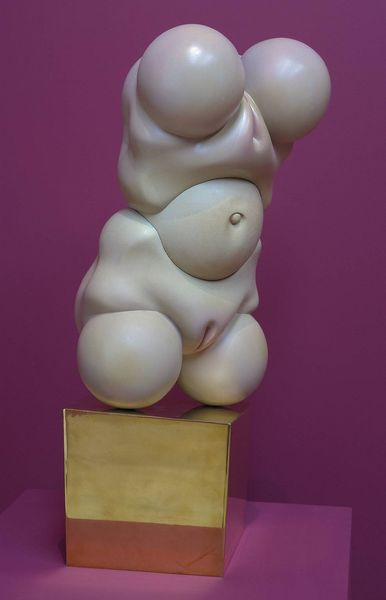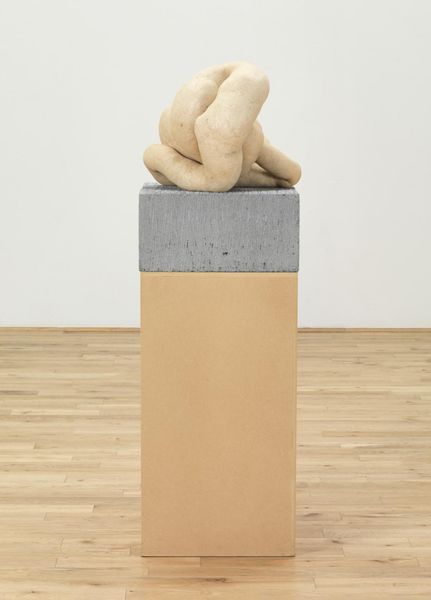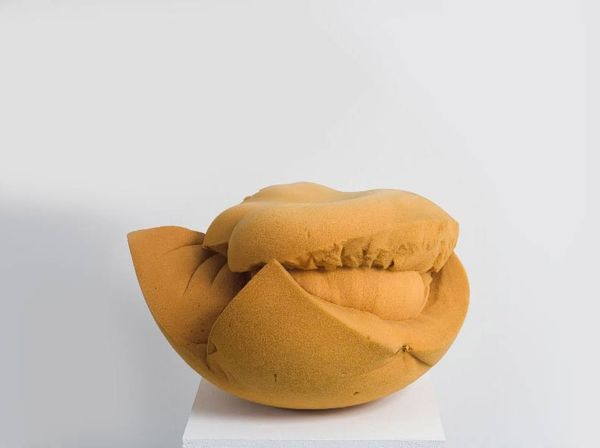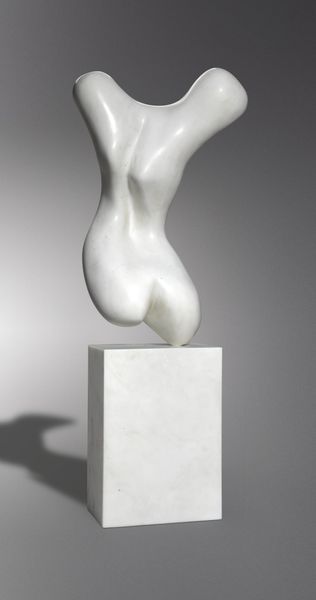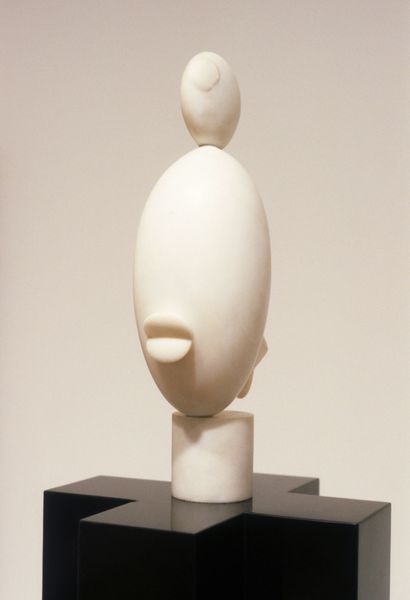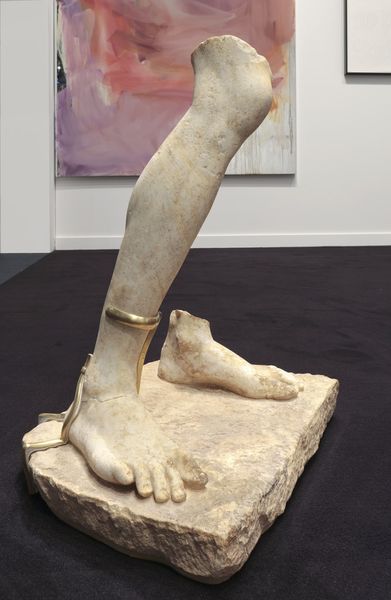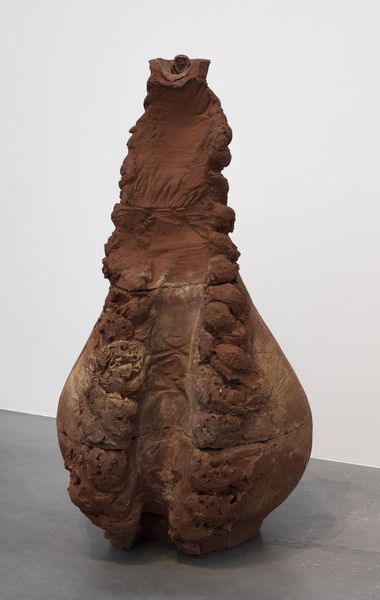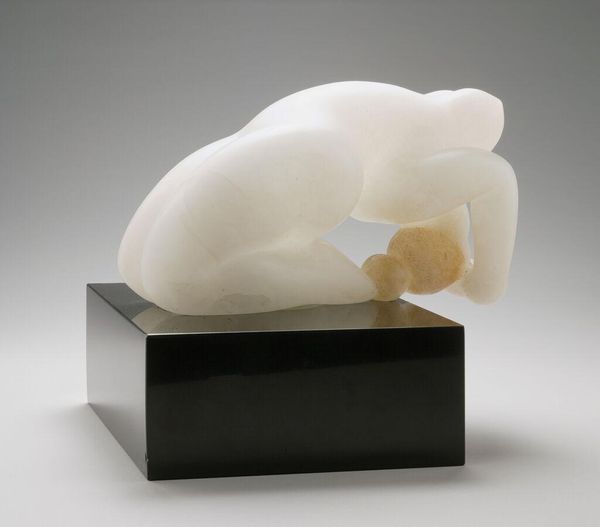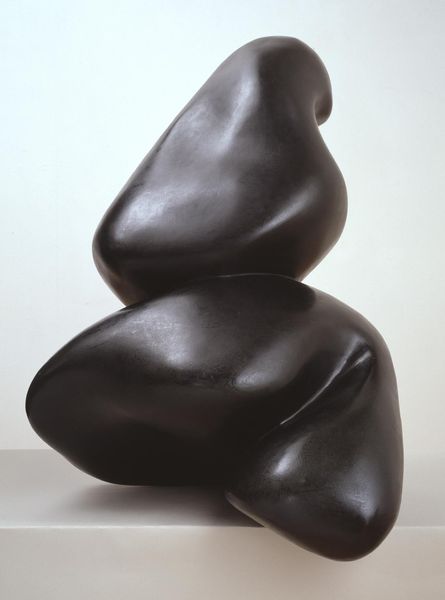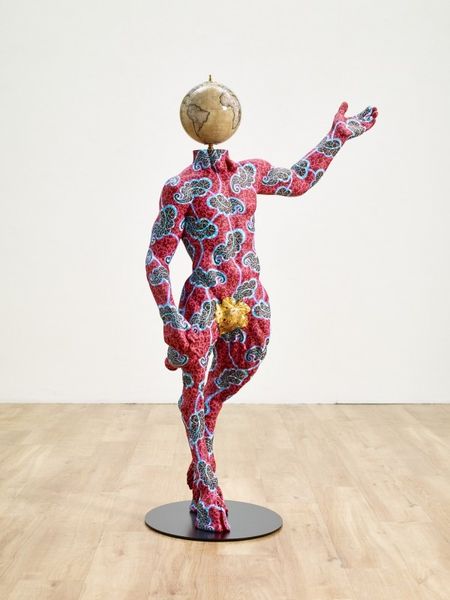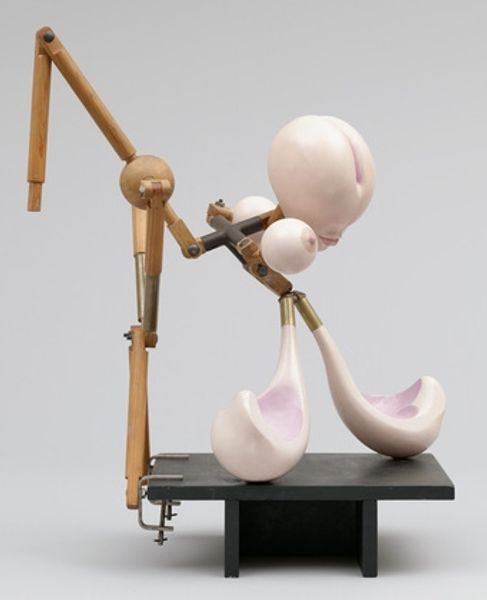
Dimensions: object: 635 x 307 x 305 mm
Copyright: © ADAGP, Paris and DACS, London 2014 | CC-BY-NC-ND 4.0 DEED, Photo: Tate
Curator: This is Hans Bellmer's "The Doll," a sculpture currently held in the Tate Collections. It stands roughly 63 centimeters tall. Editor: Well, it’s certainly… striking. The fleshy tones and the fragmented, almost biomorphic shapes are unsettling. Curator: Bellmer's practice revolved around the body, and he constructed these dolls using unconventional materials, often repurposing everyday objects in his work. Editor: The materiality here is key. The process of assembling and manipulating these materials conveys a sense of both creation and violation. It really challenges conventional sculpture. Curator: Indeed. Its distortion evokes a complex engagement with Surrealist ideas about desire, gender, and the subconscious. Editor: Precisely, and observing the labor and context helps us think about consumption and the body politic. Curator: A compelling contrast, reminding us of the multilayered nature of this work. Editor: It leaves you pondering.
Comments
Join the conversation
Join millions of artists and users on Artera today and experience the ultimate creative platform.
tate 6 months ago
⋮
In the early 1930s, Bellmer created an almost life-sized figure of a young girl, which André Breton and Paul Eluard described as ‘the first and only Surrealist object with a universal, provocative power’. He recreated the doll in a variety of forms. This version makes the element of sexual fantasy explicit by reducing her to two sets of hips. It also derives from Bellmer’s desire to maximise the articulation of this substitute body/object through the use of ball joints. Indeed, this work was originally known as Ball Joint, and was exhibited in the 1936 Surrealist exhibition of objects held in Paris. Gallery label, August 2004
